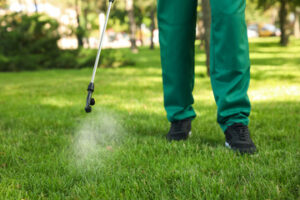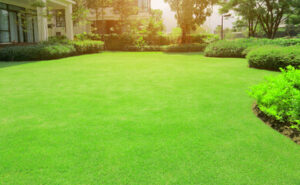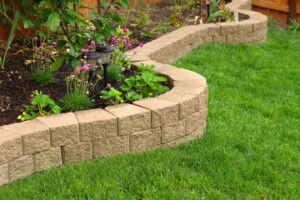Palm trees require a variety of tools based on their size. Always start with a hand pruner, and only upgrade to something larger when necessary (you shouldn’t need a chainsaw to trim a small palm flower or fruit stalk). Make sure all pruning equipment is sterile before making any cuts. Contact Palm Tree Trimming Phoenix for professional help.

Palms come in many different species, and each has a somewhat unique set of needs when it comes to pruning. For example, some palms produce fruit that can attract pests, while others need to be trimmed regularly to avoid wind damage. Regardless of the species or purpose, however, the first step in proper palm tree trimming is always to carefully observe the condition of the foliage. Dying or wilted fronds, signs of potassium deficiency, and other factors can all indicate that a palm is in need of trimming.
The classic sign of an overzealous gardener attempting to trim a palm tree is the so-called hurricane cut. This is a method of pruning in which the entire crown and most of the fronds are removed, leaving the trunk and its bud exposed to sun, rain, and wind. While this may make the palm look a little cleaner, it actually puts the tree at a disadvantage. The fronds not only provide shade and support, but they also protect the growing bud, and removing too many of these fronds will inhibit the palm’s growth.
When determining the right time to prune, it’s important to note that the majority of the leaves in a palm are sterile (non-producing). Therefore, if the tree is overgrown or has lost its luster, the best course of action is to remove only the fronds that are in the process of aging or dying. However, it’s essential to never cut the fronds directly below the current year’s growth, as this can stress and even damage the tree.
In addition, the petioles of mature fronds have sharp needle-like protrusions that can prick anyone who handles the waste material. This is why it’s imperative to wear protective gloves and safety goggles when pruning a palm.
It’s also a good idea to prune flowers and fruit from palms that grow them, as these can drain the plant of nutrients and energy, as well as attract pests and create hazards for people or property below. Lastly, seed heads left to develop on the tree can be messy and invite unwanted seedlings into the landscape.
Preparing for the Trim
First, it is important to have the right gear for trimming palm trees. This includes a sturdy helmet to protect against falling fronds, and safety goggles to shield your eyes from debris and sap. Durable gloves are also essential to ensure that you have a good grip on your tools and protect your skin from cuts. It is also essential to thoroughly clean your tools before and after every use. This will help to minimize the risk of spreading diseases from one palm tree to another.
During the trim, it is necessary to remove any dead fronds and old, yellowing ones. However, it is important not to remove too many green fronds, as they serve to help the plant with its food production. Removing too many of these can cause the palm to enter a state of deficiency, which can lead to stunted growth or even death.
It is also recommended to remove any drooping or overgrown fronds that are obstructing people or property. Lastly, it is important to trim away any flowers or fruit stalks that are in progress to conserve energy and prevent potential hazards caused by rotting fruit or pest attraction.
Once you have finished trimming, it is important to water the palm tree properly. This will help the tree to recover from the stress of pruning and promote growth in the following year. However, it is essential to avoid overwatering as this can lead to root rot.
As a general rule, it is best to prune palms on a regular basis and in the spring. This is the best time to trim because it will not disrupt the plant’s natural cycle. Additionally, this is a good time to trim palms that are recovering from a hurricane or fire. It is also a good idea to affix braces to the palm, especially in areas that are prone to heavy wind. This will prevent the tree from tipping over in a storm or during a fire. It is essential to affix these braces to the palm’s trunk and not to the fronds as this can damage them.
Cutting the Fronds
Once you’ve identified the dead fronds that need to be cut, you’ll need to prepare your tools for the task at hand. Before you make any cuts, sanitize your pruning shears or loppers with rubbing alcohol. This will help prevent the spread of disease to other palms and plants around your garden. It will also help protect your hands and fingers from any sharp pieces that may fall during the trimming process.
Once the fronds are ready to be cut, start at the bottom of the tree and work your way up. Always be sure to leave a few mature fronds near the trunk. This will help provide the necessary support for the tree, and prevent it from tipping in heavy winds.
For the fronds that are within your reach, trim them to a uniform length and shape. You can use a pair of pruning shears, a pole saw, or a curved pruning saw to get the job done. For the fronds that are higher up on the tree, you may need to take advantage of climbing equipment, such as a ladder or a cherry picker. Be sure to use proper safety gear when working with a ladder or power tools, and have someone nearby to help steady the equipment as you climb up and down the ladder.
After trimming the fronds, you can remove any fruits or flowers that have started to grow. Responsibly dispose of this plant waste so that it doesn’t attract pests or encourage the growth of unwanted plants in the surrounding area.
When pruning the palm, be sure to avoid over-trimming. Over-trimming can stress the palm and detract from its natural beauty. If you’re unsure of how much to trim, or have questions about the health and appearance of your palms, contact professional tree care services. They can provide advice on how much to trim, as well as guarantee the continued health of your trees.
Taking the time to properly trim your palms will help them thrive and stay healthy for years to come. By removing dead fronds and preventing over-trimming, you can promote the growth of new fronds that will add to the beauty of your garden.
Cleaning Up
When the palm tree trimming is complete, you need to clean up all of the waste. Leaving fronds, flowers, fruit, and other debris around the tree can create safety hazards and encourage pests. Moreover, it can also lead to expensive property damage if the debris falls on buildings or cars.
When cleaning up, it is important to avoid over-pruning the palm. This can stress the palm and interfere with its ability to produce food. Additionally, it is crucial to avoid using climbing spikes, as these can create permanent wounds on the trunk that may lead to disease and pests.
Once the palm is cleaned, it is important to take the time to inspect it for any potential problems that might have arisen during the pruning process. Taking the time to do this will help prevent future damage and save you money by catching any problems early on.
Another aspect of palm tree maintenance is to remove any snags and tangles that may be preventing proper air flow or sunlight penetration. This can be done by hand or with a pole saw. Finally, it is important to reopen pathways for light and air circulation by removing any ties or ropes that were used during the trimming process.
While pruning is a vital part of palm maintenance, it can be dangerous and should only be performed by professionals with experience and knowledge of the species being trimmed. Using professional tree care services not only ensures accurate and safe trimming, but it can also guarantee the continued health of your palm trees.
Palm trees are beautiful additions to any landscape, but they can pose a danger when they overgrow and are not properly maintained. Regular trimming can promote the growth of healthy fronds, and keep dead or damaged fronds from falling. This not only improves the aesthetic of the tree, but it can also prevent damage to property or injuries from falling debris. By following these tips, you can safely and effectively trim your palm trees. Keeping your palms healthy is essential for your property’s value and beauty.






